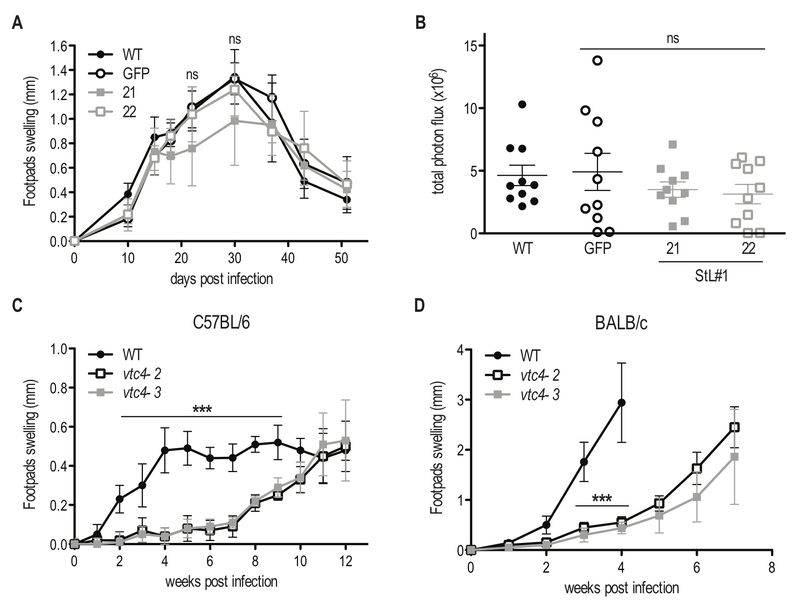Back to article: Importance of polyphosphate in the Leishmania life cycle
FIGURE 7: In vivo infection with VTC4 knockdown and knockout Leishmania. (A) C57BL/6 mice hind footpads were infected with 3 x 106 late stationary phase L. guyanensis parasites and disease progression was monitored by measuring footpad swelling over time. (B) Parasite load was quantified by in vivo imaging (Xenogen) measuring the luminescence signal (photon flux/10min/footpad). (C) C57BL/6 or (D) BALB/c mice hind footpads were infected with 3 x 106 late stationary phase L. major parasites and disease progression was monitored by measuring footpad swelling over time. Results of a pool of 2 independent experiments (A and B) or one representative of 3 independent experiments (C and D) were expressed as mean ± SD (n ≥ 5). Statistical significance was assessed by Repeated measure ANOVA (A and C) or Student’s t-test (B and D); ***p < 0.001, ns: non-significant.

